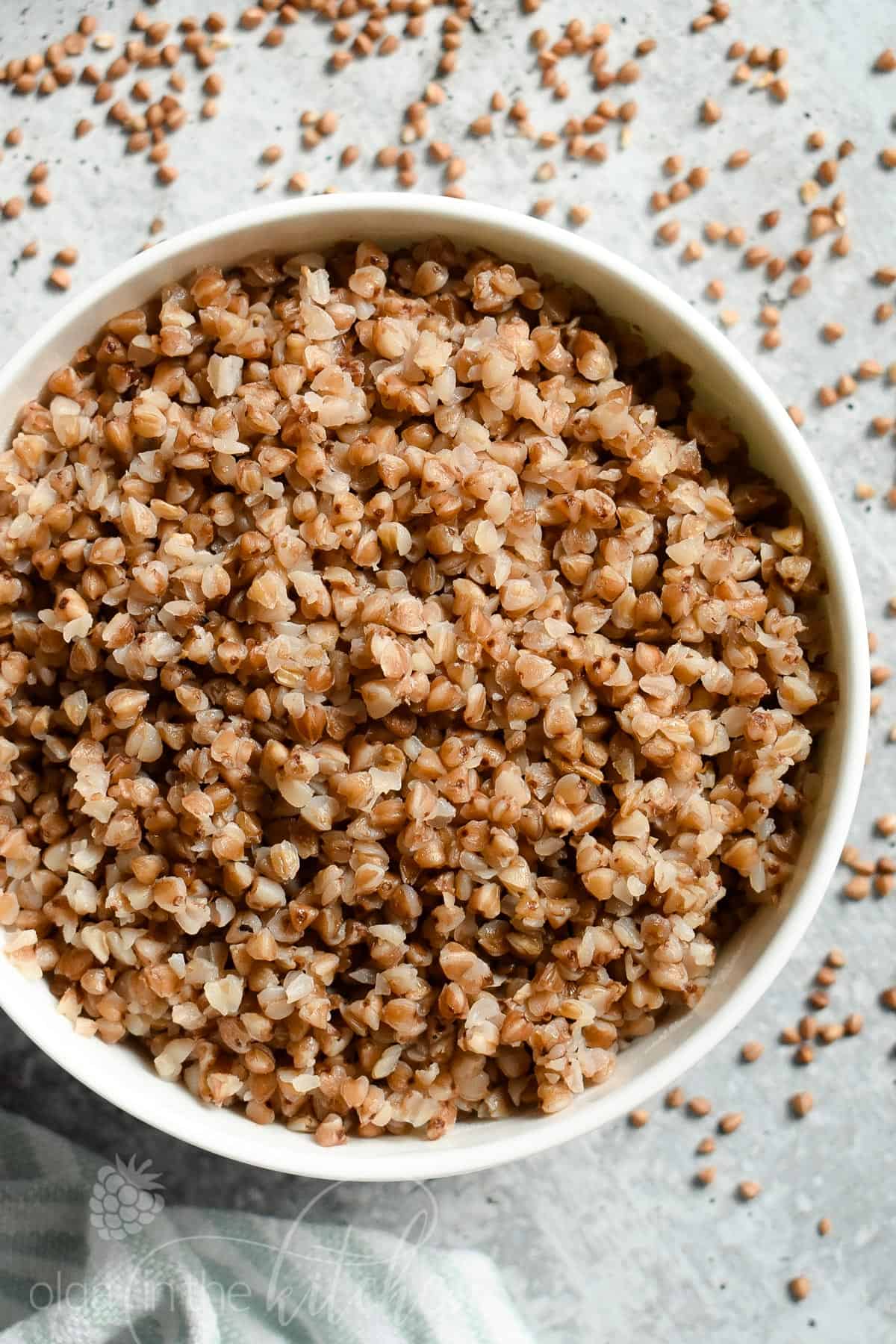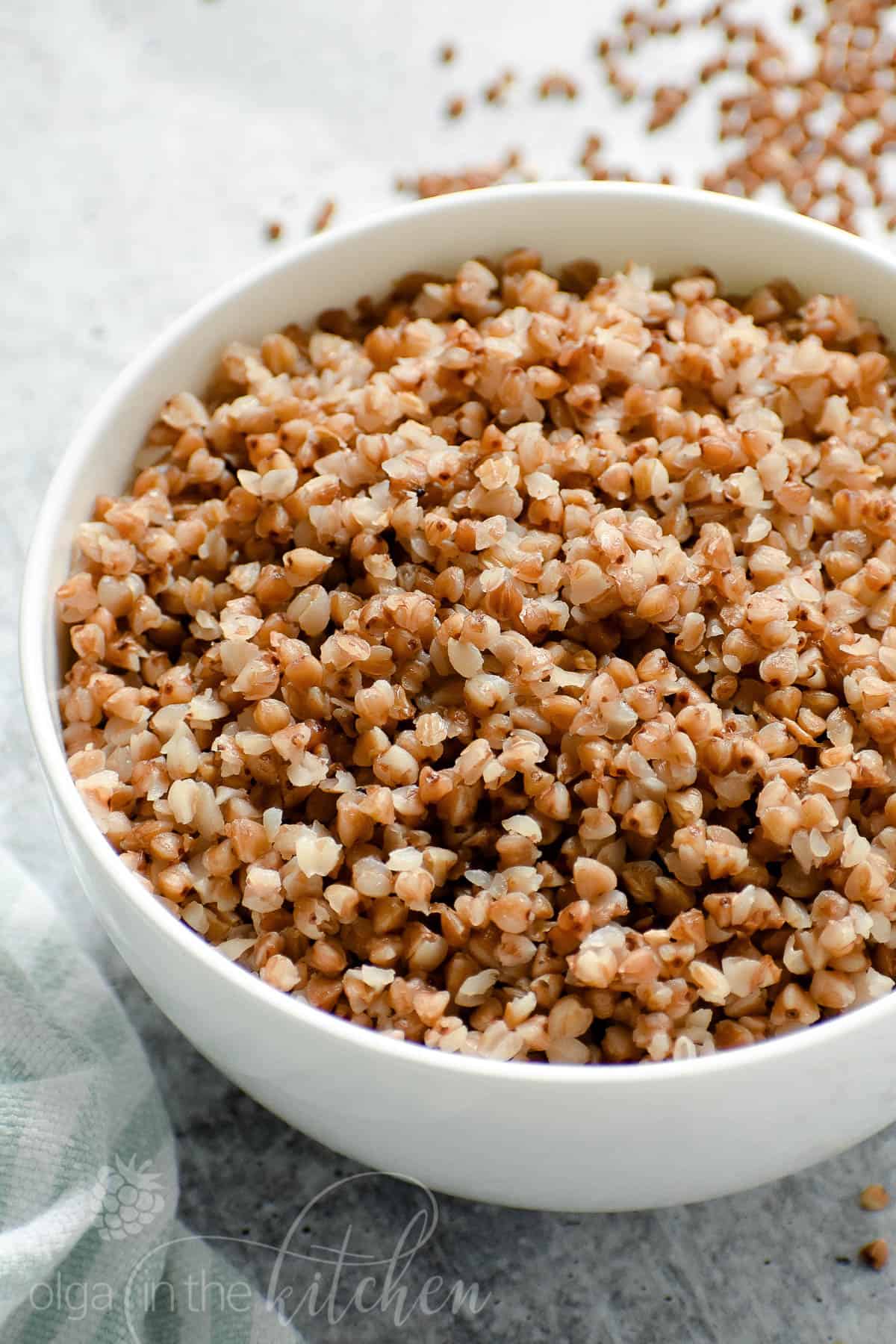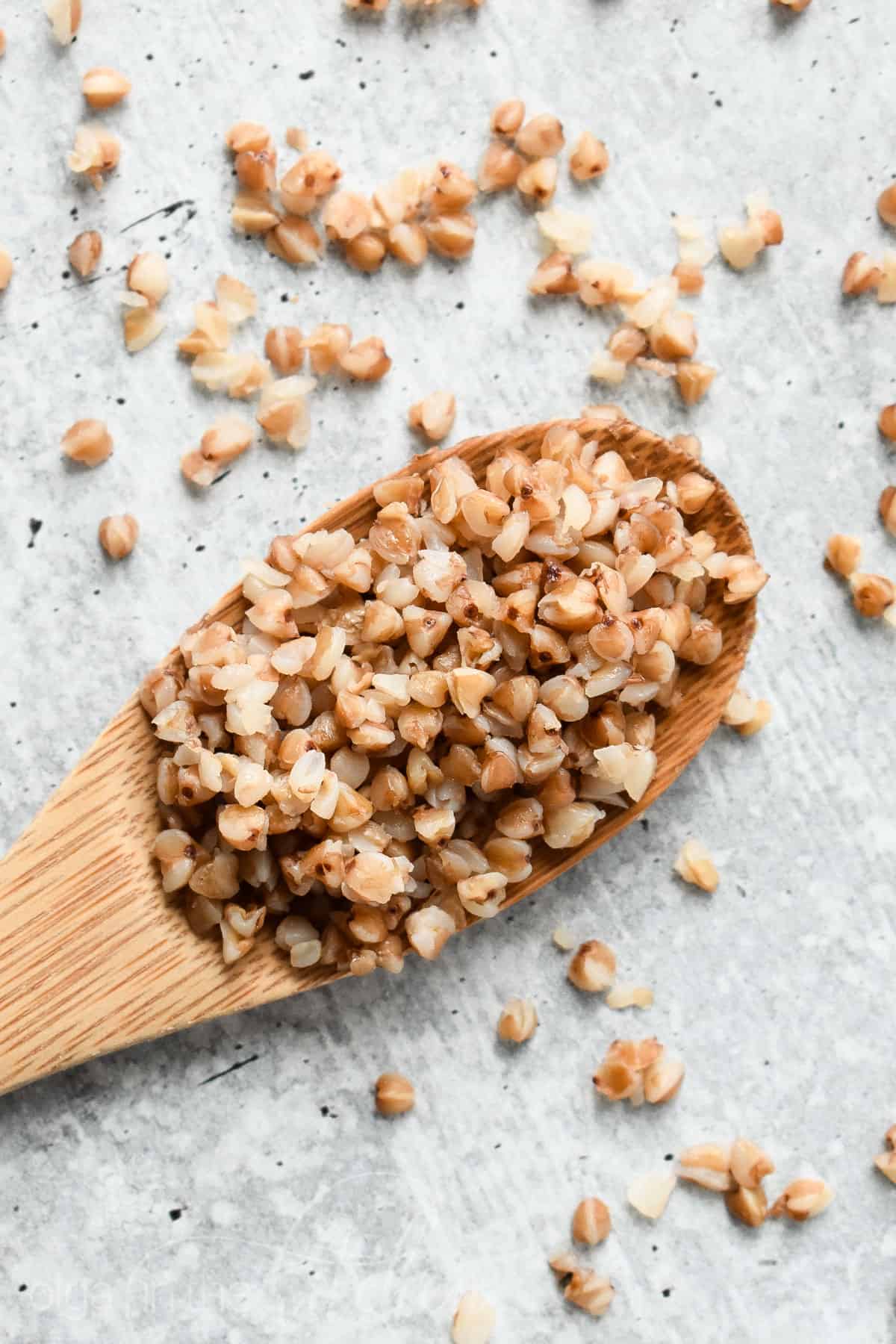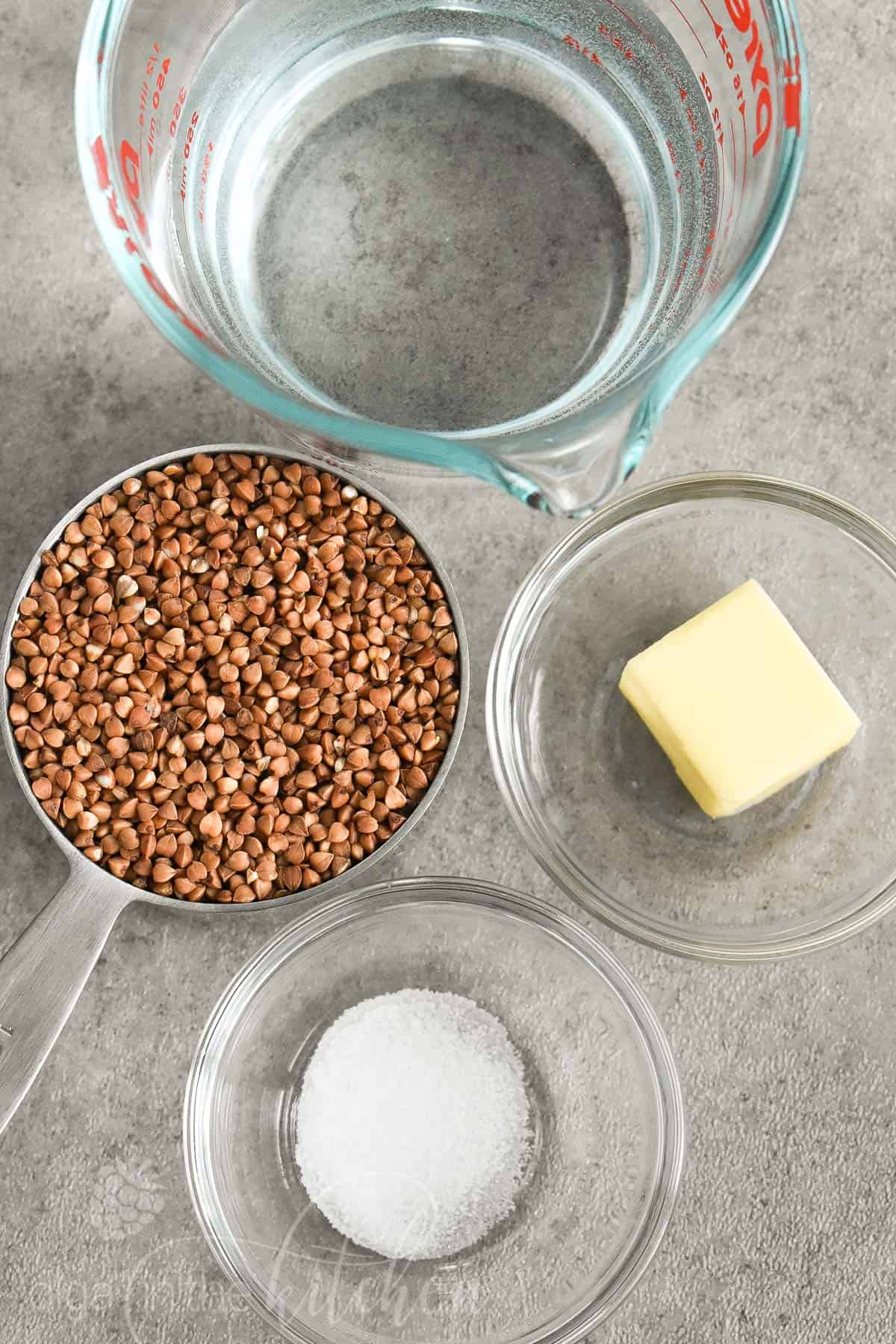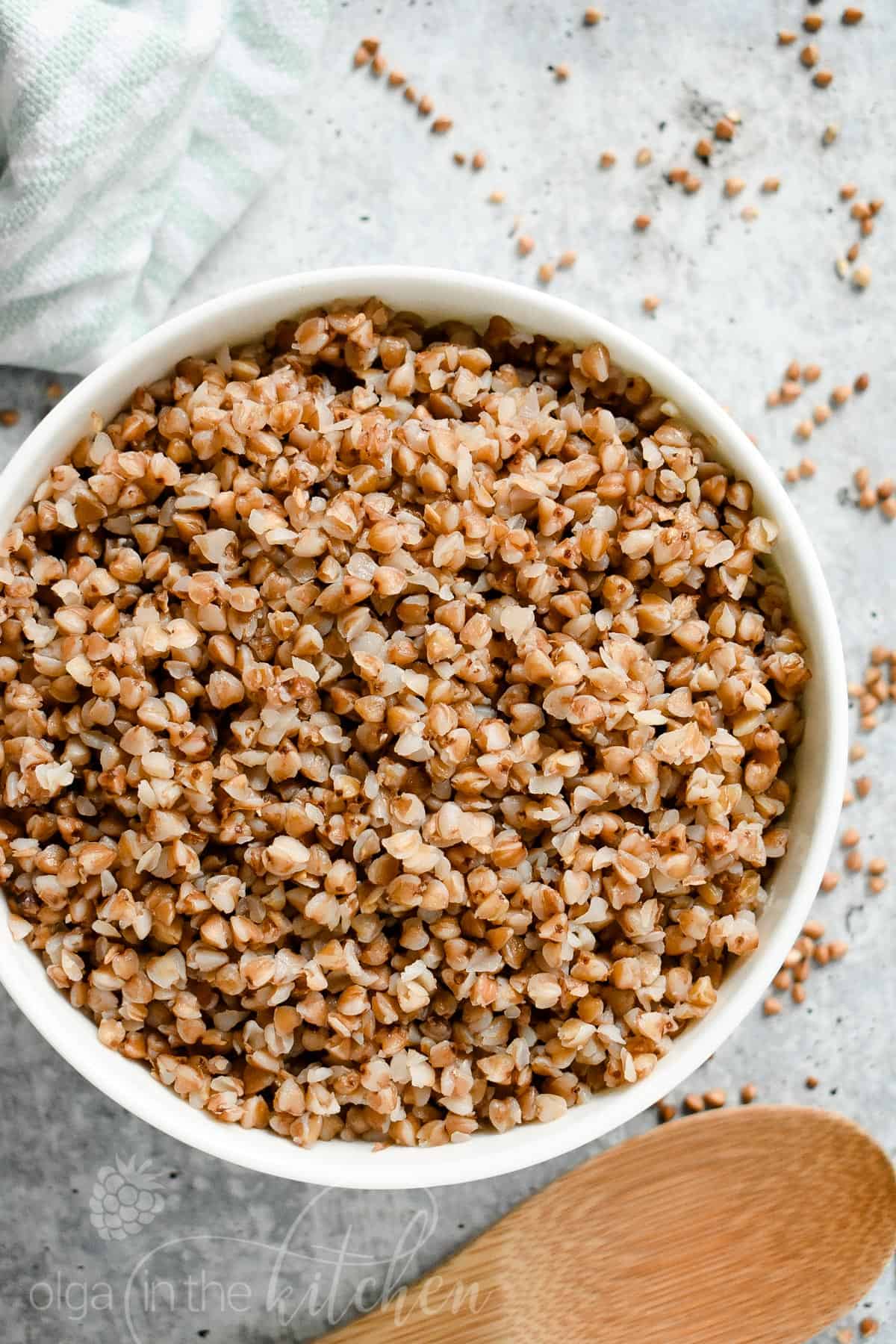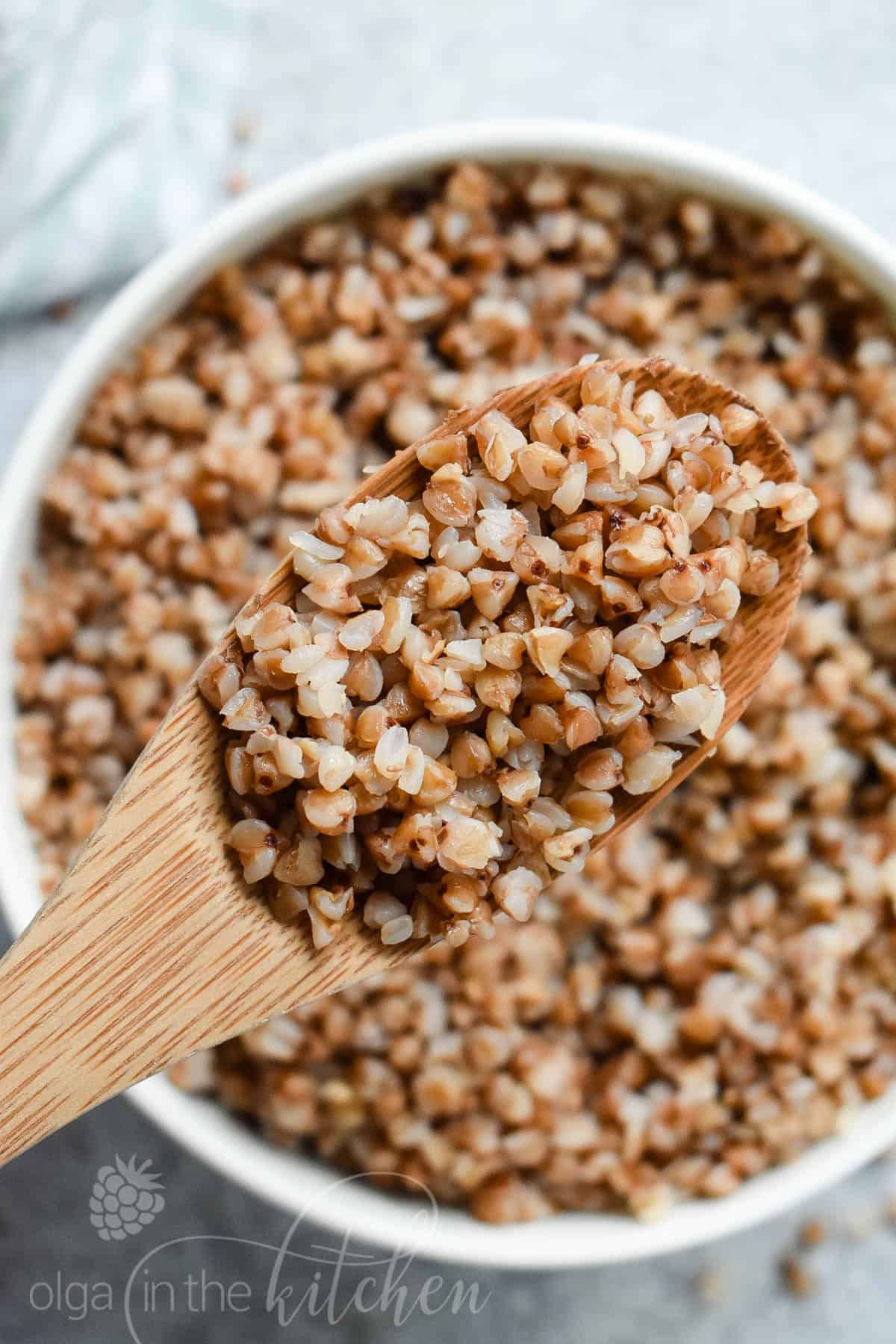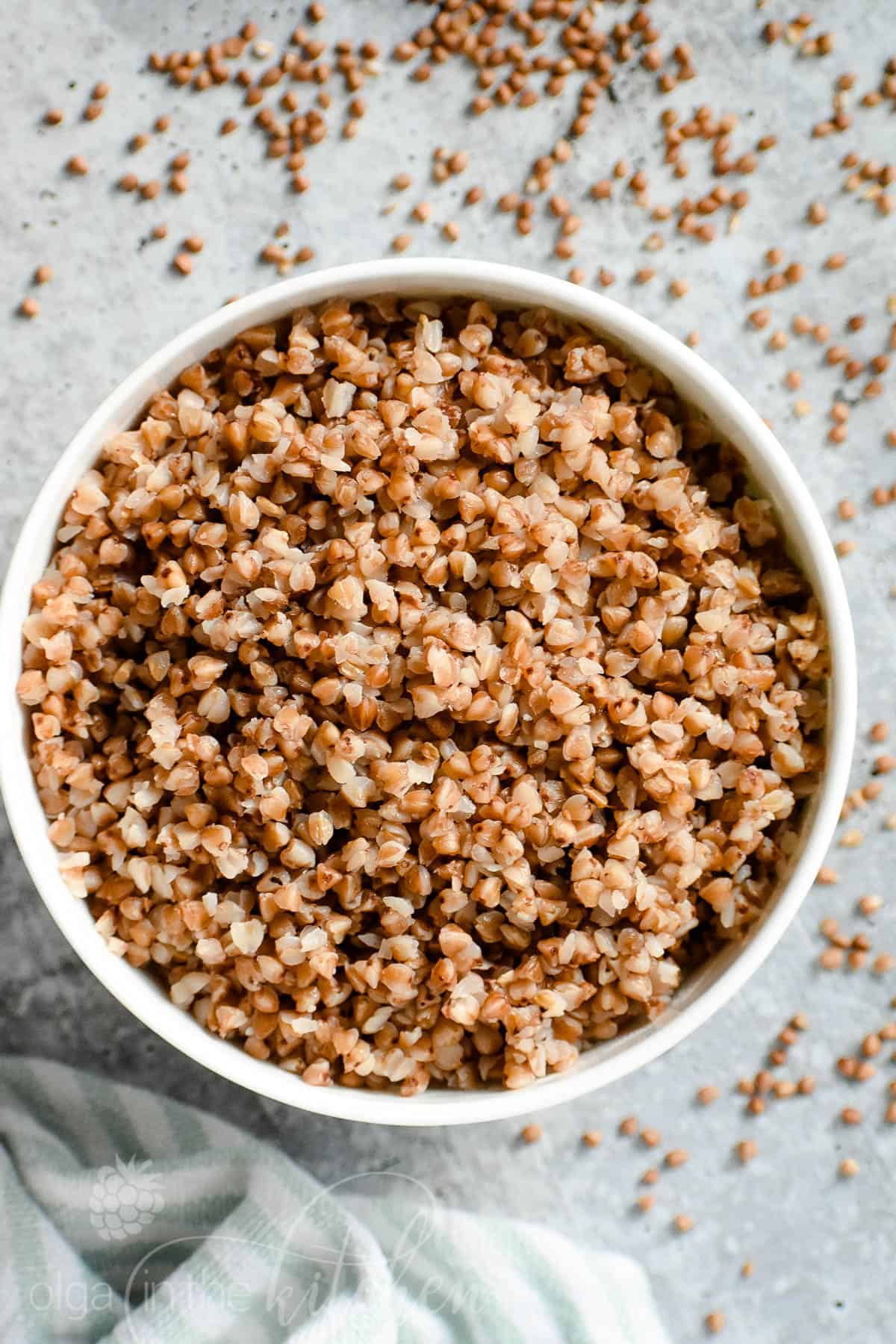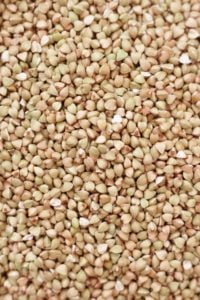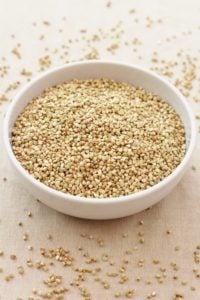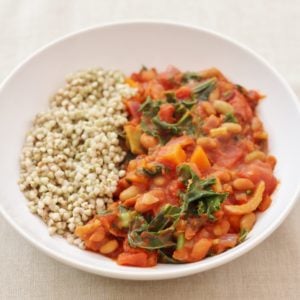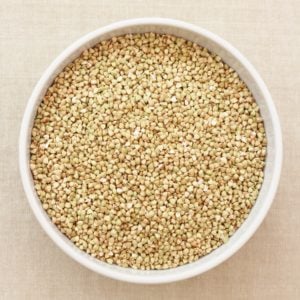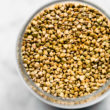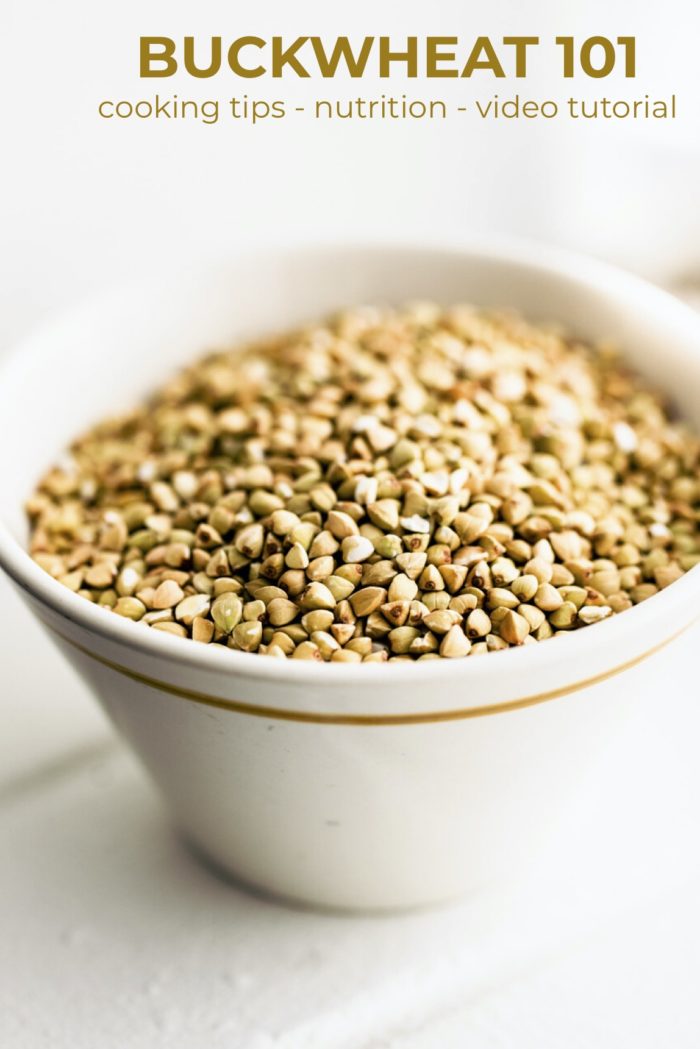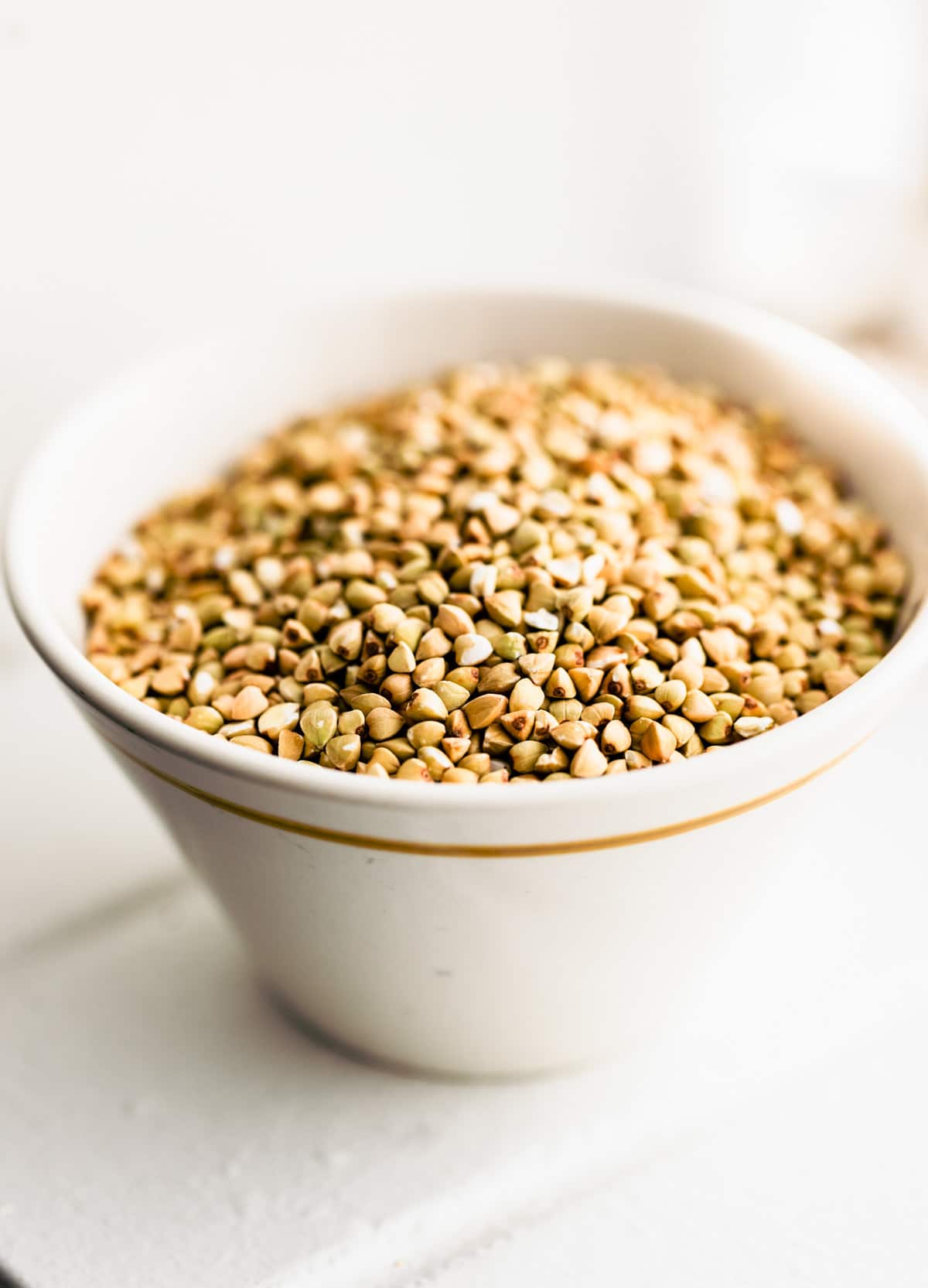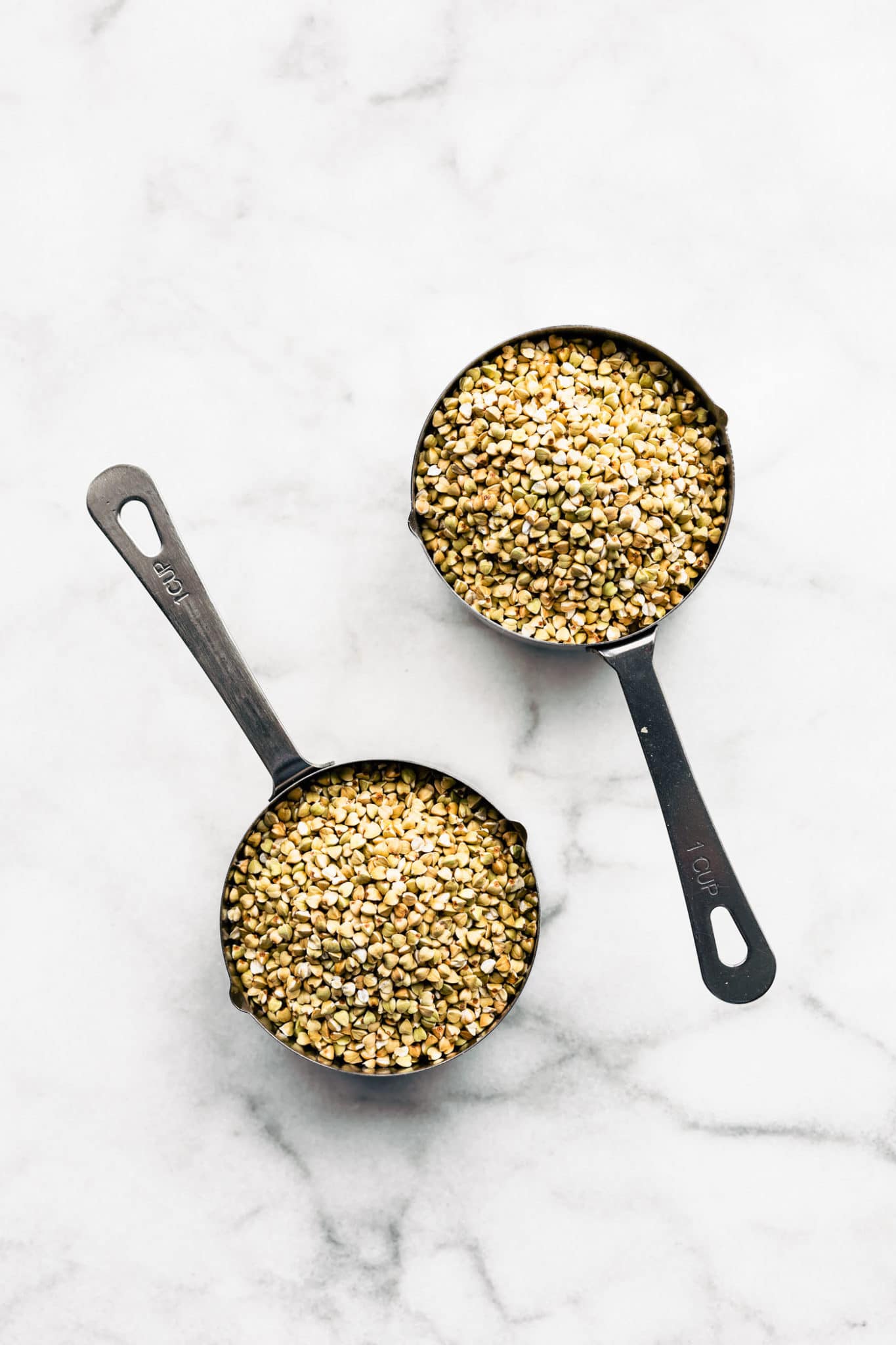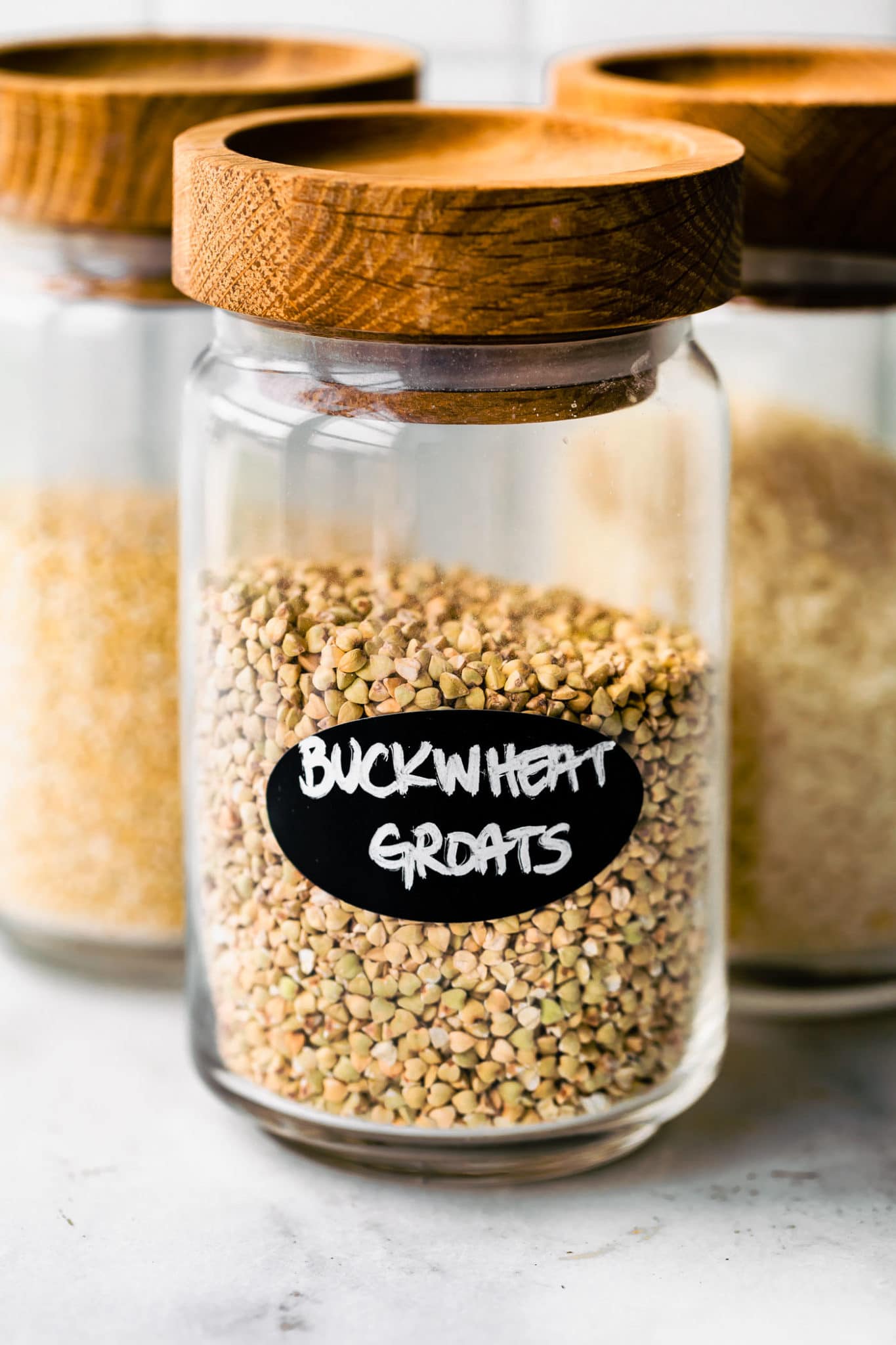How to cook buckwheat
How to cook buckwheat
How to Cook Buckwheat
Buckwheat is a healthy, gluten-free seed with a nutty, toasty flavor and soft texture. It is not as popular as oats and wheat and often under-appreciated, but it’s so easy to prepare and inexpensive. Its name “buckwheat” is a little confusing and included in the list of grains, but it is not related to wheat and it is not a grain. It’s just as simple to prepare as White Rice. Learn How to Cook Buckwheat Kasha perfectly every time!
This post may contain affiliate links. Read my disclosure policy.
I was not a buckwheat eater for all my childhood and youth years. About 2 years ago I somehow made myself try it and over these years it became one of my favorite easy meals to enjoy.
Buckwheat kasha is very versatile and can be eaten as a porridge for breakfast to replace those colorful breakfast cereals or as savory dish for lunch or dinner. It is great served with Pork Meatballs, Chicken Drumsticks or Tenderloins with a side of asparagus or Lettuce Radish Salad. In under an hour, you can prepare a wonderful and satisfying meal.
What is Buckwheat?
Buckwheat is a healthy, gluten-free seed with a nutty, toasty flavor and soft texture. Often times its name “buckwheat” is a little confusing and included in the list of grains, but it is not related to wheat and it is not a grain. It’s just as simple to prepare as White Rice, but considered as one of the healthiest meals. If you are trying to avoid gluten and eat gluten free, buckwheat is perfect for you!
Where Can I Purchase Buckwheat?
We love this buckwheat sold at the Russian, European or Asian markets. It usually comes pre-toasted and is golden brown color. If the buckwheat you purchased is not toasted, toasting buckwheat is pretty simple.
You can quickly toast it on a dry skillet over medium heat for 4-5 minutes until golden brown. Then remove from heat and proceed with the recipe.
As much as I am trying to stick to organic products, this is probably the only time I would not purchase organic product. Organic buckwheat comes with different texture than what we are used to, therefore, this recipe just might not work with it well.
I always make sure to have buckwheat in my pantry and never run low. It’s one of the easiest meals to prepare, especially when I’m in a hurry or running out of dinner ideas.
Ingredients for Cooked Buckwheat:
You will need only 4 ingredients to cook buckwheat kasha. Usually water is not really considered as an ingredient, but in this case we do consider it as one as it’s the only liquid kind. Adding a bit of unsalted butter will give cooked buckwheat some extra flavor so it does not taste dry and does not stick. Also, a bit of fine salt to make it extra tasty.
How to Cook Buckwheat?
Why Buckwheat is Good for You?
Buckwheat is superfood! It is healthy, low carb, gluten free and is a great source of potassium, fiber, iron, protein and vitamin B6. It is also really good for your immune system as it is a good source of magnesium, copper, zinc and manganese.
Because it does not contain gluten, for people with celiac disease or gluten intolerance, buckwheat is an excellent dietary alternative.
How to Avoid Mushy Buckwheat?
Try your best to purchase buckwheat from an Eastern European market or here (same one). The texture of the buckwheat from these sources is denser and prevents it from overcooking avoiding the mushy results.
Follow the recipe for water ratio and cooking time. More water or prolonged cooking time will both lead to mushy buckwheat. However, mushy buckwheat is not all bad and is delicious either way. Many of my family members actually prefer it mushy and mushy is easier for toddlers to bite and chew.
How to Reheat Cooked Buckwheat?
The easiest way to reheat cooked buckwheat is using microwave. Cover with plastic food wrap or there is a possibility buckwheat will pop all over the interior of the microwave.
Buckwheat can also be reheated in a nonstick skillet over low heat with a bit of butter or no butter. Cover with lid to ensure even and faster heating. It will take few minutes.
Buckwheat – What is it? How do you cook it? And is it good for you?
Not sure about Buckwheat? Here’s all you need to know about what it is, why it’s so good for you and how to cook it perfectly… every time!
This post uses Affiliate links from which I may earn a small commission. As an Amazon Associate I also earn from qualifying purchases. Commission earned is at no extra cost to yourself. Thank you for supporting this blog.
DON’T LOSE THIS RECIPE… PIN IT FOR LATER…
What is Buckwheat?
Buckwheat (and its toasted sister ‘Kasha’) have become increasingly popular in recent years. With good reason. For beyond the ‘health diet’ image, buckwheat is a truly amazing ‘grain’, which should be given the recognition it deserves.
Except it isn’t a ‘grain’. Buckwheat is in fact, the seed (also known as a pseudo cereal) from the family of ‘Fagopyrum’ plants (knotweed), which are related to rhubarb and sorrel. And despite the name, buckwheat has no connection with wheat either. Which means it’s entirely GLUTEN FREE… So, it’s perfect for a Coeliac diet
Even better… It’s easy to find in most good supermarkets, usually in the aisle with the rice and other grains.
In addition to Buckwheat groats (the hulled seeds which are eaten in a similar way to rice), buckwheat is also used (in pure form) to make everything from soba noodles and pasta to flour. Indeed, Buckwheat Flour is a versatile ingredient in the gluten free flour larder, not least because its high protein content offers great structure as well as nutrition. At gluten free Alchemist, it has been used in a whole variety of bakes… From a versatile all-purpose rice-free flour blend and Wholemeal Bread, to pancakes, pastry and Chocolate Crinkle Cookies.
And then it also comes in the form of Sprouted Buckwheat and Buckwheat Flakes… The latter being an interesting and healthy alternative to oat porridge.
Why Buckwheat is so amazing
So, what makes Buckwheat so amazing and why should we be eating it?
Buckwheat (and Kasha) Nutrition
Buckwheat has the reputation of a ‘superfood’. It’s a great source of protein and fibre, while also being extremely low in fat. Although it contains about 27% carbohydrate, its sugar content is negligible. And that means that it is also a low GI (glycaemic index), slow-release energy… A good option for people with Type 2 Diabetes.
Buckwheat is relatively low in calories too. According to BBC Good Food, a single portion of cooked Buckwheat (about 84g) contains just 122 calories. Not bad considering its capacity to sate.
It is also massively rich in magnesium (important for everything from bone and mental health through to energy levels and stable blood pressure) and Vitamins B, zinc, iron, copper and manganese.
Naturally ‘free from’ gluten and other major allergens
Although there is a small minority of people who are unable to tolerate buckwheat, it otherwise remains entirely ‘free from’ (barring usual cross-contamination checks). That, coupled with its nutritional profile, make it a wonderful addition to many otherwise nutritionally limiting diets.
Versatile
Because Buckwheat can be eaten as ‘groats’ and flakes or made into flour to create pasta, noodles and a whole variety of bakes, it is an incredibly versatile ingredient. But its versatility doesn’t stop there. Despite being a minor crop, Buckwheat is also a plant that is relatively unfussy to grow. And with the ever-increasing world population, this may be something to commend it.
Happy in infertile and poorly-drained soil, it also grows quickly and has the ability to smother weeds and attract pollinating insects.
What does buckwheat taste like?
Buckwheat naturally has quite a strong, nutty flavour and for some people has bitter overtones. I have found this to be more of an issue when used as an individual flour than when eating the groats. Actually, I really like it and the more I eat it, the better it gets.
As a Coeliac family, Buckwheat has become a regular addition to our diet, offering a healthy and helpful alternative to rice and a good sub for cous cous and other gluten-containing carbs. The trick to enjoyment however is probably in how you cook it. Over-cooked, it will turn to an unpleasant mush. So… Read on to ensure your Buckwheat is cooked to perfection…
How to Cook Buckwheat groats– tips to getting it perfect every time
Perfectly cooked Buckwheat should be ‘al dente’… Soft enough to eat but still hold its firmness with a chewy bite that offers an enjoyable texture as well as flavour. But is there a secret to cooking correctly?
I’ve scoured the internet in an effort to ensure my Buckwheat is failsafe. And believe me… there are more methods out there for cooking than I care to count. Many of them lack consistency and leave too much to chance on how much liquid the groats will absorb. So, I spent time (a lot of time) playing… Working on ratios as well as cooking times in an attempt to get the bowl I wanted… every time. What I discovered is that how it’s cooked REALLY matters. Here are my tips and FAQs…
Should I rinse the Buckwheat?
Search the web and you will find that the wisdom on washing buckwheat varies from rinsing before cooking… to after cooking… to not at all. Some recipes even suggest pre-soaking for lengthy periods.
Having tried each and every method, I have come down on the side of pre-rinsing under the tap for the following reasons:
How much liquid should I use to Cook Buckwheat?
As with rinsing, different recipes suggest different cooking processes. Some cook in lots of liquid for a period of time and then drain afterwards. While others suggest using a ratio of liquid to groats which varies considerably. Some recipes suggest a long cook and others (like this one) give a more finite instruction based on the time taken for the groats to absorb the liquid.
I have gone down the route of a ratio of liquid to groats (much as you would cook either rice or quinoa). But having persevered with the frequently advised 1:2 ratio for some time (realising that it always ended up as mush), I worked on getting the proportions right… Eventually settling on a happy ratio of 1 groats to 1½ liquid by volume. So, for every 1 cup of groats, I cook with 1½ cups of liquid. I have also provided weights in the recipe below too.
This means that (because it has already been rinsed before cooking), once the Buckwheat has absorbed all the liquid, it should be ready to eat straight from the pan. No need to drain!
| Buckwheat Groats | Liquid |
| 1 US Cup (180g) | 1½ US Cups (330g) |
| ½ US Cup (90g) | ¾ US Cup (165g) |
These ratios will provide perfectly ‘al dente’ cooked buckwheat groats. If, however you prefer softer groats, add an additional 1 to 2 tsp (5 to 10 ml) per HALF Cup of groats.
** Note – The ratios given are for non-toasted buckwheat. Kasha (the toasted groats) may cook with a little less liquid.
Adding extra flavour (or not)
Because the Buckwheat is completely cooked without the need to rinse or drain, this method also offers the opportunity to add additional flavour to the pan, which will then be absorbed or coat the cooked groats. Throw in some bouillon (my favourite) or a little alternative stock, some herbs or even spices. All of these will enrich and offset any ‘bitterness’ for those who are more taste-sensitive.
Alternatively, just add a little salt, butter or leave entirely plain. OR go sweet ‘porridge’-style – and cook in milk with spices before adding fruit.
Leave the lid on
Once the pan is on the hob, bring to a boil with a tight-fitting lid on. Then (apart from a quick check to see that the liquid is boiling), leave the lid ON and turn down the heat to a low simmer. Resist any urge to take the lid off until very near the end of cooking. The Buckwheat needs to absorb the liquid.
Simmer for 8 to 10 minutes before turning OFF the heat and then leave to stand for a further 4 to 5 minutes (lid on) to allow absorption of any remaining liquid.
What is buckwheat and how do you cook it?
Buckwheat is naturally gluten free, full of nutrients and keeps popping up in fashionable diets all over the place. But what exactly is it? How do you cook it? And does it actually taste nice?
What is buckwheat?
Despite its recent rise to fame, buckwheat is actually an ancient grain with a long history. It has been eaten in Asian and Eastern European countries for centuries, but is now becoming increasingly popular in the west due to its many health benefits.
While buckwheat is often thought of as a cereal grain, it is actually a fruit seed that is related to rhubarb and sorrel. However, because its seeds are rich in complex carbohydrates, it is sometimes referred to as a pseudo-cereal.
While it is not a true grain, it can be used like one in cooking and is a delicious alternative to couscous, bulgur wheat, rice and pasta.
Buckwheat is super healthy, very versatile and, despite its name, it’s not actually related to wheat. Buckwheat is naturally gluten free and should therefore be safe to eat for those with coeliac disease and gluten sensitivities. (Or so the internet tells me – do check with your doctor if you are unsure!)
Buckwheat comes in several different forms: buckwheat seeds (often called ‘buckwheat groats’, or just ‘buckwheat’), buckwheat noodles, buckwheat pasta and buckwheat flour. The groats are available completely raw or sprouted and are also available toasted. The toasted buckwheat groats are commonly referred to as kasha and have an earthier, nuttier flavour than the raw buckwheat.
While the pasta, noodles and flour are quite expensive and can be hard to get hold of (try health food shops or larger branches of Waitrose), the buckwheat seeds/grouts are more easily obtainable and relatively inexpensive. I bought this 500g pack of Buckwheat from Tesco for £1.90 and got 12 adult-sized servings out of it.
Why is buckwheat so healthy?
Buckwheat is high in protein and fibre. It is rich in many trace minerals, including manganese, magnesium and copper and is a good source of the B vitamins. It also contains relatively few calories (66 calories for an 80g cooked portion, 40g uncooked) and practically no fat. Buckwheat also ranks low on the glycaemic scale. In fact buckwheat is so packed with nutrients and antioxidants that it is often referred to as a “superfood”.
Diets that contain buckwheat have been linked to a lowered risk of developing high cholesterol and high blood pressure and buckwheat may even help weight loss, reduce food cravings and improve diabetes.
Buckwheat is an excellent source of plant-based protein, meaning buckwheat is an great choice for vegetarian and vegan diets.
How do you cook buckwheat?
As a result of following the Sirtfood Diet, I have been spending a lot of time cooking buckwheat lately and have therefore had a lot of opportunity for trial (and error!).
Buckwheat is actually incredibly easy to cook, but my biggest piece of advice would be: don’t follow the packet instructions. The instructions on my packet of Tesco Buckwheat advised me to cook it for 30 minutes – well, after 20 minutes it was a horrible disgusting tasting mush. Goodness knows what would have happened after 30 minutes! And just by way of contrast, on the packet of identical looking buckwheat from Waitrose it says to cook the buckwheat groats for 8 minutes!
And when you try and google ‘How to cook buckwheat’ there are so many different answers and complicated recipes, it’s tempting to give up.
A good deal of experimentation later and I have a very simple formula. Cook the buckwheat for 10 to 15 minutes in plenty of boiling water and drain. That’s it.
Whether you cook it for 10 or 15 minutes, I would suggest is a matter for personal taste – a bit like pasta. I like pasta done al dente and buckwheat the same, so I do mine for 10 minutes, but if you like your pasta a little softer, I suggest you should cook buckwheat a little longer.
If you want to add a little extra taste to your buckwheat, try toasting it in the dry pan for 2 to 3 minutes first before adding the boiling water, this will give you some extra nutty flavours and a richer, deeper taste – but is not necessary if you are in a hurry. (Also, do be careful when adding the boiling water to the pan that’s been toasting the buckwheat – it’s liable to bubble up like a volcano!).
Should you rinse buckwheat? I did rinse my buckwheat after cooking it to begin with, but actually found in the end that it wasn’t necessary so long as a) I didn’t cook the buckwheat for too long and b) I used enough water to cook it in. I found when I tried the absorption method, like I usually do for rice, it did need rinsing afterwards, but by boiling it in plenty of water (like pasta) it was fine and didn’t need rinsing afterwards. I found rinsing beforehand didn’t really seem to achieve anything so I stopped doing it.
Cooked buckwheat can be stored in the fridge for up to 3 days, making it a great one to cook up a big batch and use for various salads throughout the week.
Cooked buckwheat can be frozen too. Simply place it in a lidded plastic container and pop it into the freezer, where it will keep for up to 3 months.
Does buckwheat taste nice?
Yes! Or at least I think so, but I have found it is a bit of an acquired taste. The first time I tried buckwheat, I thought it was horrible! But then that was the time I cooked it for 20 minutes until it was an unappetising mush! The more I have eaten it, the more I have enjoyed it and now I absolutely love it and am happily eating it more or less every day! So I would encourage you to persevere if you don’t like it at first.
What do you do with buckwheat?
Buckwheat can be used in place of other carbs such as rice, couscous, potatoes or pasta. It can be used as a side dish for a curry or stew, or it can be used instead of rice, bulgur wheat or couscous in a salad. It can also be used instead of rice to make a risotto-style dish. Check out this recipe for one of my favourites: Kale and Red Onion Dhal with Buckwheat.
What Is Buckwheat and How to Cook It
What is buckwheat? Keep reading to find out! We’re covering everything from what it is, whether it’s good for you, how to cook it, how to use it, and more! One read through, and you’ll be swapping out all your grains for buckwheat recipes that are every bit as tasty, full of nutrients, and always gluten free!
Pin this recipe for later!
Part 2 of our Gluten Free Grains Month, this blog is part of our Buckwheat series in which we teach you what it is, how to use it, and more to spread knowledge about gluten free grains and help make it easier to follow a gluten free diet without missing out on delicious meals the whole family can enjoy!
What’s Better than Buckwheat?
Okay, y’all, it’s time to address the elephant in the room, and that’s the fact that many of us have been ignoring buckwheat. Over here at the Cotter Crunch team, we think it’s time we gave it the credit it deserves! So, we’re giving you a full week of buckwheat-related posts to help this grain shine. After all, not only is it gluten free, but it’s also extremely nutrient-rich, high in fiber, and contains a solid amount of protein with 13.3 grams per serving.
Plus, it’s so easy to use! If you haven’t given it a try, we highly recommend you do. You won’t regret it, promise! That’s because buckwheat is extremely versatile and can be included in recipes to replace rice, couscous, potatoes, pasta, and more. Eat it as cereal, mix toasted buckwheat groats into a salad for a little extra crunch, turn it into noodles…honestly, the options are endless, and oh so tasty!
So, before we ramble on any further (we’re passionate about this grain, okay?), let’s cover the primary question of, “What is buckwheat.”
What Is Buckwheat, Anyway?
If you missed our gluten free grains post, be sure to go back and take a look! We went into detail about all 7 of our top gluten free grain options. However, in the meantime, we’ll just give you the basics.
Is It a Carb or a Protein?
With 71.5 grams of carbs, 13.25 grams of protein, and 3.4 grams of fat per 100 grams, buckwheat is considered a carb. However, with 10 grams of fiber, it contains a high amount of resistant starches which are not completely absorbed by the body and offer additional health benefits.
What Does It Taste Like?
Most commonly, cooked buckwheat is described as having a nutty flavor similar to that of wheat or rye.
What are Buckwheat Groats?
If you noticed I referred to buckwheat as buckwheat groats, you might’ve been a little confused. Are they two different things? Not quite! You see, buckwheat groats are simply the hulled seeds of the buckwheat plant that we use for cooking.
Nutrition Myth: Despite its name, buckwheat does not contain and has no relation to wheat!
Buckwheat Health Benefits…Is it Good for You?
As mentioned, buckwheat is a good source of whole grain carbs and fiber. However, it’s also loaded with vitamins and minerals including magnesium, phosphorous, and potassium. As a result, it can help prevent heart disease, assist with weight loss or weight management, improve digestion, help manage diabetes, boost your immune system, and more! (Source)
How to Cook Buckwheat (+ Video)
We know learning how to cook buckwheat can be intimidating but promise it’s super easy! All you have to do is boil the grains in a pot on a stovetop. Or, cook them in an Instant Pot or slow cooker. Okay, so there are clearly several methods, but the same principles apply to each. Pick your favorite way to cook, and get all the details below!
Note: Sea salt helps improve the flavor of your buckwheat groats and can help speed up the time it takes the water to boil.
How To Cook Buckwheat
Learn how to cook buckwheat, a tasty gluten-free grain. We’ll show you how to shop for and prep your buckwheat, ways to cook it, and flavoring ideas too!
But first. have you always thought buckwheat was a «wheat»? If so, join the club! Buckwheat is a seed and is not actually a true grain or related to wheat or the true grains in any way.
I adore buckwheat and the toasted version kasha (sometimes referred to as buckwheat kasha). They’re delectable little morsels that are fun to play around with.
In fact, cooked buckwheat is perhaps my most favoritest ingredient when making burritos and wraps of all kinds because the mild flavor seems to work well with all fillings.
Here’s what you’ll discover below:
How To Select Buckwheat
Before you create your buckwheat (or kasha) recipe, it will be helpful to know the difference between them.
Untoasted buckwheat (photo on right) is a pale greenish white and has a mild taste. It’s a quick-cooking grain that’s packed with nutrition. It usually comes «hulled» and has a pretty little heart shape unlike any other grain out there.
Toasted buckwheat is known as «Kasha» (photo on left). It has a dark brown color with an earthy flavor due to the toasting.
So buckwheat is RAW, and kasha is NOT RAW.
Always do your best to choose organic buckwheat or kasha. Organics tend to contain more nutrients and less pesticides (and other poisons like arsenic!), and will help your buckwheat and kasha recipes just taste better.
Most natural foods stores carry buckwheat. Be sure to check their bulk section first. (This is where I buy all of my grains.) Buy a little more than you need, storing the rest in the fridge or freezer. This way it will stay as fresh as possible and you’ll have some on hand for your buckwheat emergencies.
Plus, there’s no packaging to toss into a landfill so you’re helping to save the planet. Hooray! 😉
Kasha is a slightly more common grain than untoasted buckwheat and is usually found pre-packaged. Because it’s toasted first it has an amber color and a complex flavor and scent.
Buckwheat comes in different grain sizes. I recommend the coarse grind to add more texture to your dishes.
How To Clean and Prep Buckwheat
For years I simply rinsed or toasted my buckwheat before cooking it.
These days, however, I pre-soak before using. That’s because it’s believed to help make your grains more digestible. In my experience, this is true.
To pre-soak, add buckwheat to a bowl with 3-4 times the amount of water. Let soak overnight, or at least 6 hours. You’ll notice when soaking buckwheat that it gets sort of. goopy. Just place in a colander and rinse under running water, stirring occasionally, until most of the «goopiness» is gone.
The cooking times of buckwheat throughout our site are based on pre-soaking your grain first unless otherwise noted. And please note pre-soaking DRASTICALLY cuts down on the amount of time buckwheat cooks.
If you don’t want to pre-soak, then simply give it a quick rinse before cooking. Alternatively, you can toast it in a dry pan to bring out more flavor. By the way, when you toast buckwheat it then is known as kasha.
How To Cook Buckwheat
Here are the cooking techniques we use and recommend for buckwheat.
Click the one you’d like to learn more about for complete cooking instructions.
Buckwheat Vegan Flavor Matches
Create your very own recipe with some of your favorite ingredients from this list of foods that match perfectly with buckwheat and kasha.
Try One Of These Vegan Buckwheat Recipes.
Buckwheat Helpful Hints
